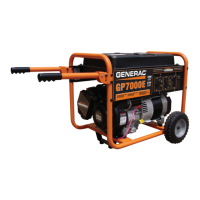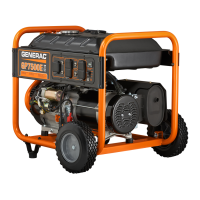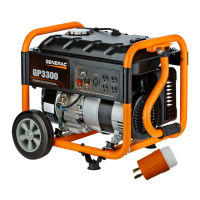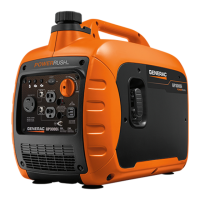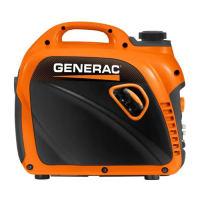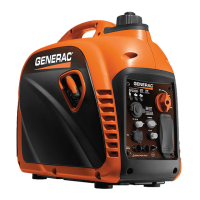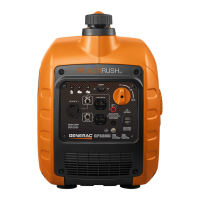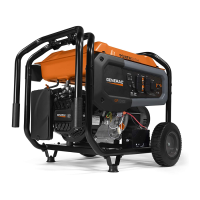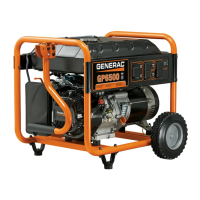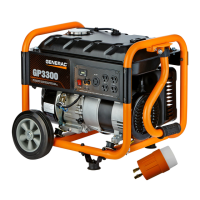GENERAL INFORMATION
SECTION 1.2
MEASURING ELECTRICITY
PART 1
Page 13
METERS
Devices used to measure electrical properties are called
meters. Meters are available that allow one to measure
(a) AC voltage, (b) DC voltage, (c) AC frequency, and
(d) resistance in ohms. The following apply:
• TomeasureACvoltage,useanACvoltmeter.
• TomeasureDCvoltage,useaDCvoltmeter.
• UseafrequencymetertomeasureACfrequencyin
“Hertz” or “cycles per second”.
• Use an ohmmeter to read circuit resistance, in
“Ohms”.
THE VOM
A meter that will permit both voltage and resistance to
be read is the “volt-ohm-milliammeter” or “VOM”.
Some VOMs are of the “analog” type (not shown).
These meters display the value being measured by
physically deflecting a needle across a graduated
scale. The scale used must be interpreted by the user.
“Digital” VOMs (Figure 1) are also available and are
generally very accurate. Digital meters display the
measured values directly by converting the values to
numbers.
NOTE: Standard AC voltmeters react to the
AVERAGE value of alternating current. When work-
ing with AC, the effective value is used. For that
reason a different scale is used on an AC voltme-
ter. The scale is marked with the effective or “rms”
value even though the meter actually reacts to the
average value. That is why the AC voltmeter will
give an incorrect reading if used to measure direct
current (DC).
Figure 1. Digital VOM
MEASURING AC VOLTAGE
An accurate AC voltmeter or a VOM may be used to
read the generator's AC output voltage. The following
apply:
1. Always read the generator's AC output voltage only at
the unit's rated operating speed and AC frequency.
2. The generator's Voltage Regulator can be adjusted for
correct output voltage only while the unit is operating at
its correct rated speed and frequency.
3. Only an AC voltmeter may be used to measure AC
voltage. DO NOT USE A DC VOLTMETER FOR THIS
PURPOSE.
*
DANGER! GENERATORS PRODUCE HIGH
AND DANGEROUS VOLTAGES. CONTACT
WITH HIGH VOLTAGE TERMINALS WILL
RESULT IN DANGEROUS AND POSSIBLY
LETHAL ELECTRICAL SHOCK.
MEASURING DC VOLTAGE
A DC voltmeter or a VOM may be used to measure
DC voltages. Always observe the following rules:
1. Always observe correct DC polarity.
a. Some VOM's may be equipped with a polar-
ity switch.
b. On meters that do not have a polarity switch,
DC polarity must be reversed by reversing
the test leads.
2. Before reading a DC voltage, always set the meter to a
higher voltage scale than the anticipated reading. If in
doubt, start at the highest scale and adjust the scale
downward until correct readings are obtained.
3. The design of some meters is based on the “current
flow” theory while others are based on the “electron flow”
theory.
a. The “current flow” theory assumes that direct
current flows from the positive (+) to the
negative (-).
b. The “electron flow” theory assumes that cur-
rent flows from negative (-) to positive (+).
NOTE: When testing generators, the “current flow”
theory is applied. That is, current is assumed to
flow from positive (+) to negative (-).
MEASURING AC FREQUENCY
The generator's AC output frequency is proportional to
Rotor speed. Generators equipped with a 2-pole Rotor
must operate at 3600 rpm to supply a frequency of 60
Hertz. Units with 4-pole Rotor must run at 1800 rpm to
deliver 60 Hertz.
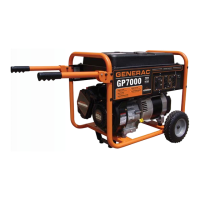
